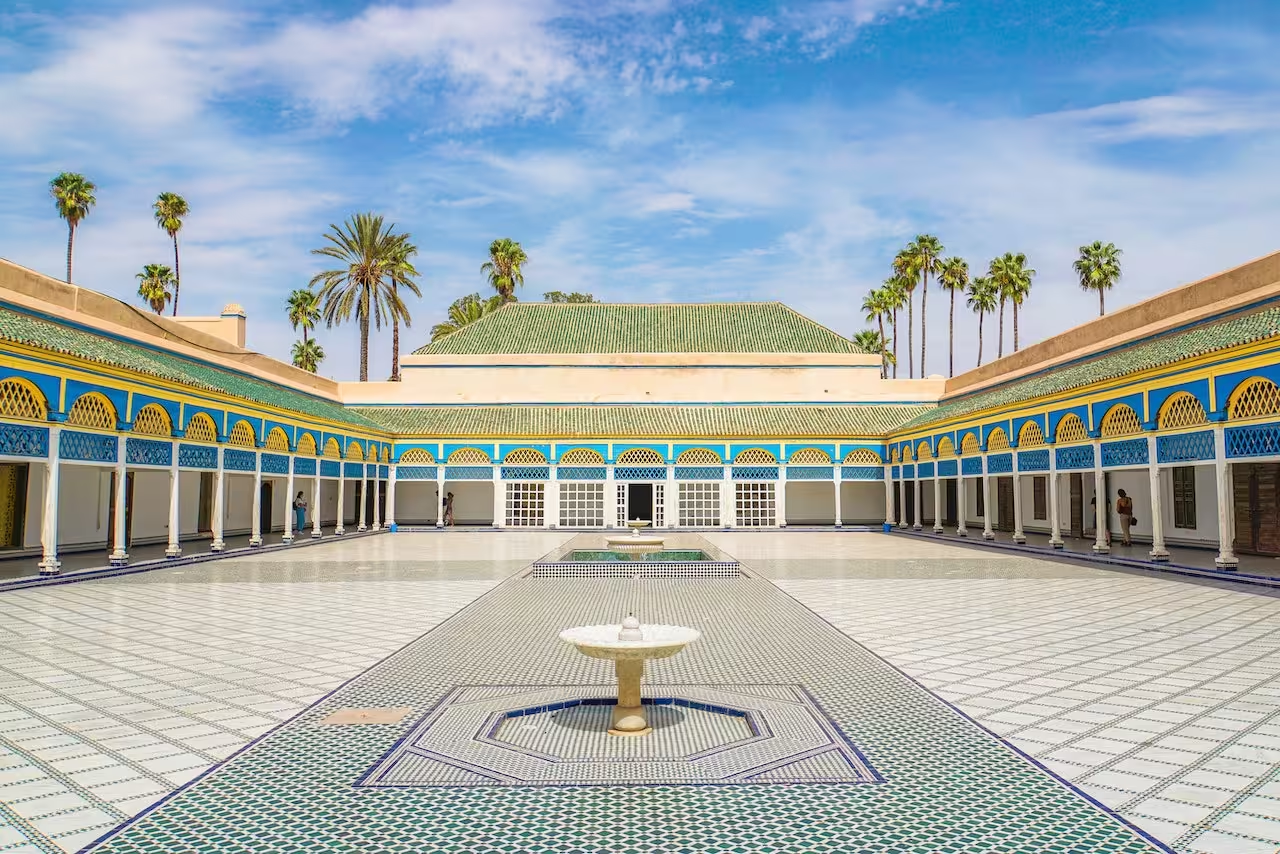Dedicated to the Berbers, the Majorelle Garden is a botanical garden and ethnological museum. It's one of the most well-liked and enjoyable destinations in Marrakech. Quite touristic, but well worth seeing!
Located in the Gueliz neighborhood northwest of Marrakech's Medina, the Majorelle Garden is a gem.
It is the most exquisite garden in Marrakech, and its museum dedicated to Berber ethnology is among the most fascinating. Completing the scene are a bookshop, fashion boutique, café-restaurant, and gallery featuring Saint-Laurent posters.
Located on the same street is the Musee Yves-Saint-Laurent, which honors the renowned designer.
History of the Majorelle painter's house and garden
Jacques Majorelle, the Art Nouveau cabinetmaker Louis Majorelle's son, enrolled in the Architecture and Decoration department at the Nancy School of Fine Arts.
He visited Spain, Italy, and Egypt after completing his painting training in Paris.
He came to Morocco in 1917 and made his home in Marrakech. following a first trip to the nation's southern region. Carnet de route d'un peintre dans l'Atlas et l'Anti-Atlas was published after his return.
In Marrakech, he painted the ceiling of the opulent La Mamounia hotel.
After ten years of residency in Marrakech, painter Jacques Majorelle moved into an art deco house designed by architects Poisson and Sinoir in 1929, which was influenced by Le Corbusier.
Using plants he brought back from his travels, the painter created a botanical garden. 10,000 m2 of "a cathedral of shapes and colors" that are part tropical garden, part Islamic garden, served as the artist's inspiration.
He used ultramarine blue, an intense blue with a hint of violet, to paint his villa in 1937. He named the color Bleu Majorelle after it. He also painted his garden in the same vivid hue.
Majorelle attempted to reimagine Orientalism in his works. He created black women in their nude states in the early 1930s.
The villa was left empty after the painter passed away for a few years until being acquired by Pierre Bergé and Yves Saint-Laurent.
Above all, they created one of Marrakech's most fascinating museums honoring the Berbers, the majority ethnic group in Morocco, in addition to renovating the garden.
Couleur Bleu by Majorelle
The use of color contrast is one of the garden's primary features.
This blue, which has a faint violet tinge to soften the color, is actually a slightly purplish blue that is meant to promote relaxation.
On the RGB scale, Majorelle blue breaks down into :
- 96 of red.
- 80 green.
- 220 blue.
Jardin botanique de Majorelle
The Majorelle Garden includes shrubs, trees, succulents, flowers, a pond with carp, a cactus garden, and a bamboo grove.
Among the many plants and trees you'll encounter are palms, cacti, a magnificent false pistachio tree, yuccas, banana trees, water lilies, lotuses, bougainvillea, palms, coconut palms, banana trees, bamboo, carob trees, agaves, and cypresses. They're also beautifully decorated with fountains, basins, fountains, pergolas, and walkways.
The serene, well-kept garden is only a short distance from the Medina. Even though it's packed with tourists, take your time exploring it.
The most remarkable shapes are displayed in pots with strikingly vibrant colors, particularly the blue and yellow majorelle that bear the name of the painter who once resided in this villa.
Pierre Bergé Museum of Berber Art: superb ethnological museum
In Morocco, the Berbers make up the majority ethnic group. This museum uses an amazing collection of artifacts, including furniture, musical instruments, clothing, and accessories, to showcase their culture, customs, and beliefs.
The museum's layout is equally remarkable, featuring exquisite chambers adorned with fragrant cedar wood, lucid and captivating narratives, exquisite illumination... To put it succinctly, a must-visit museum if you want to comprehend the depth and diversity of Moroccan culture.

